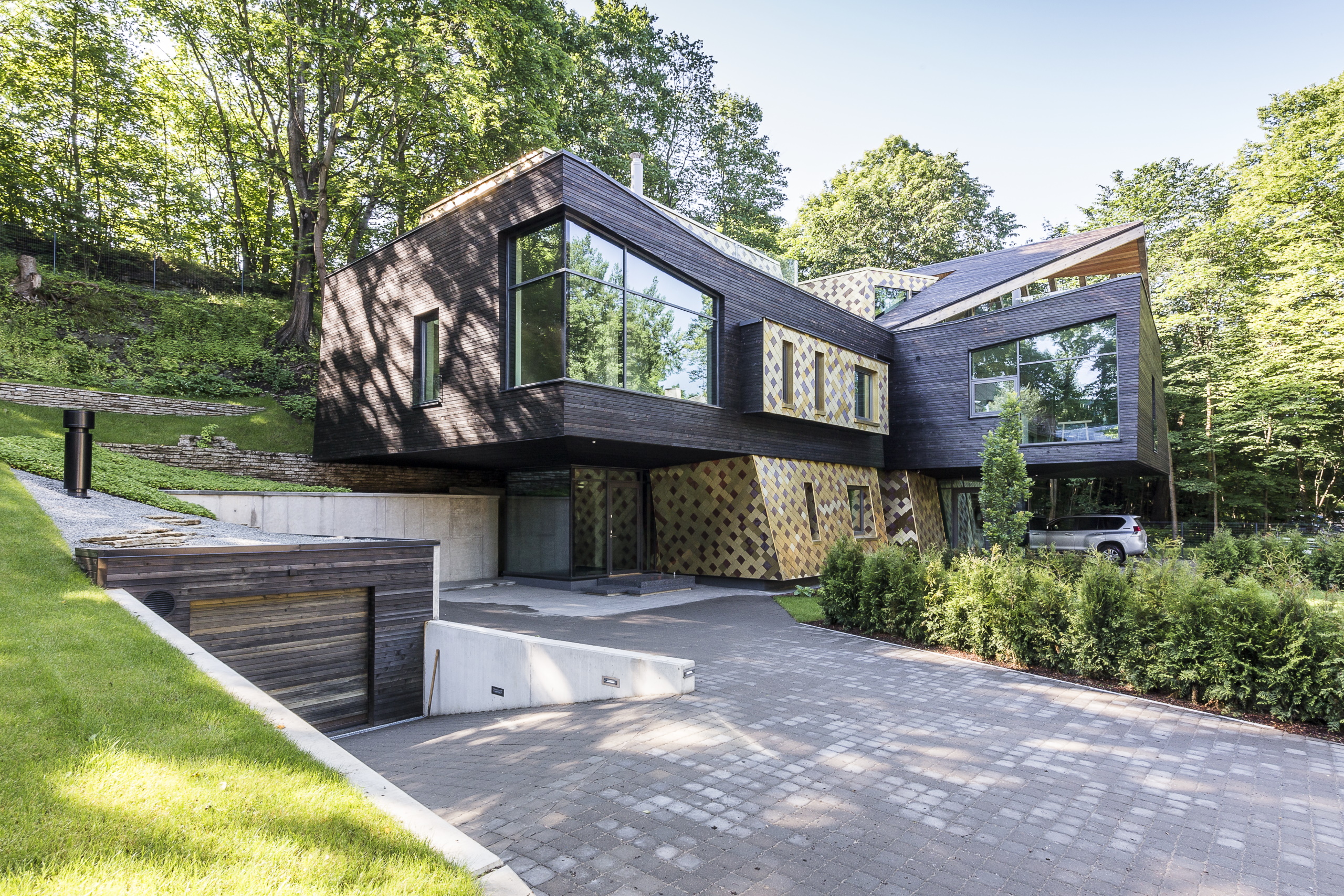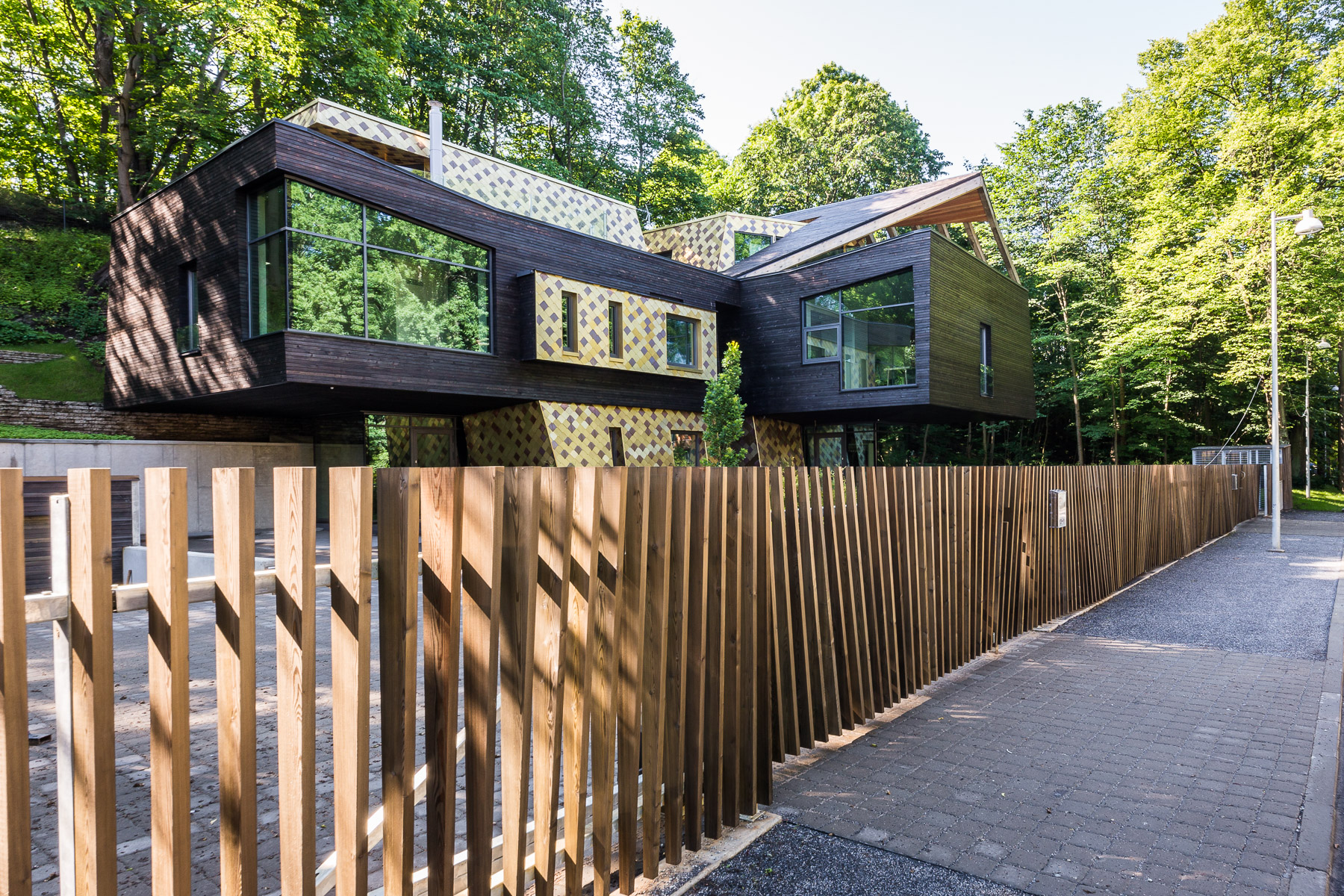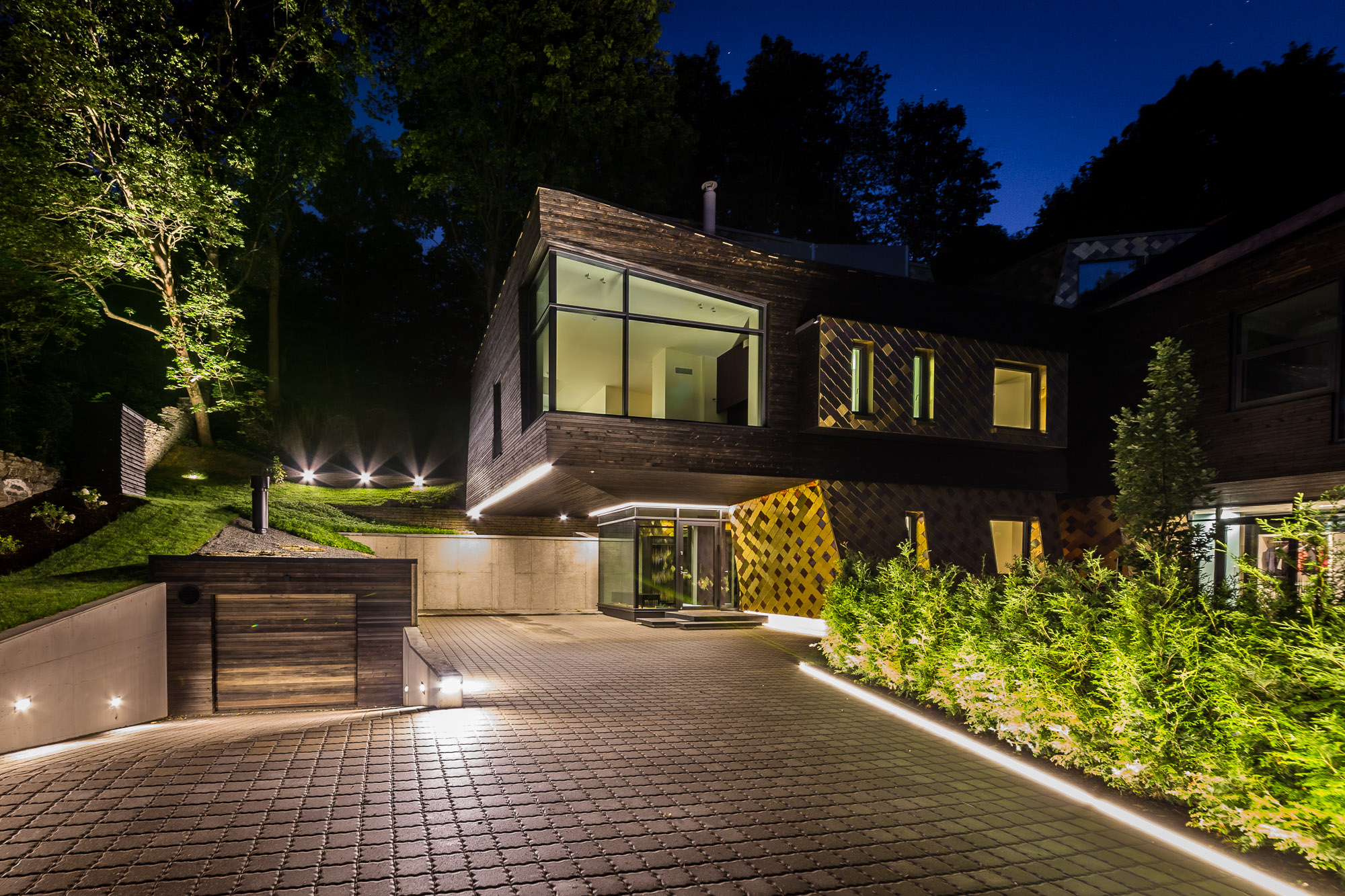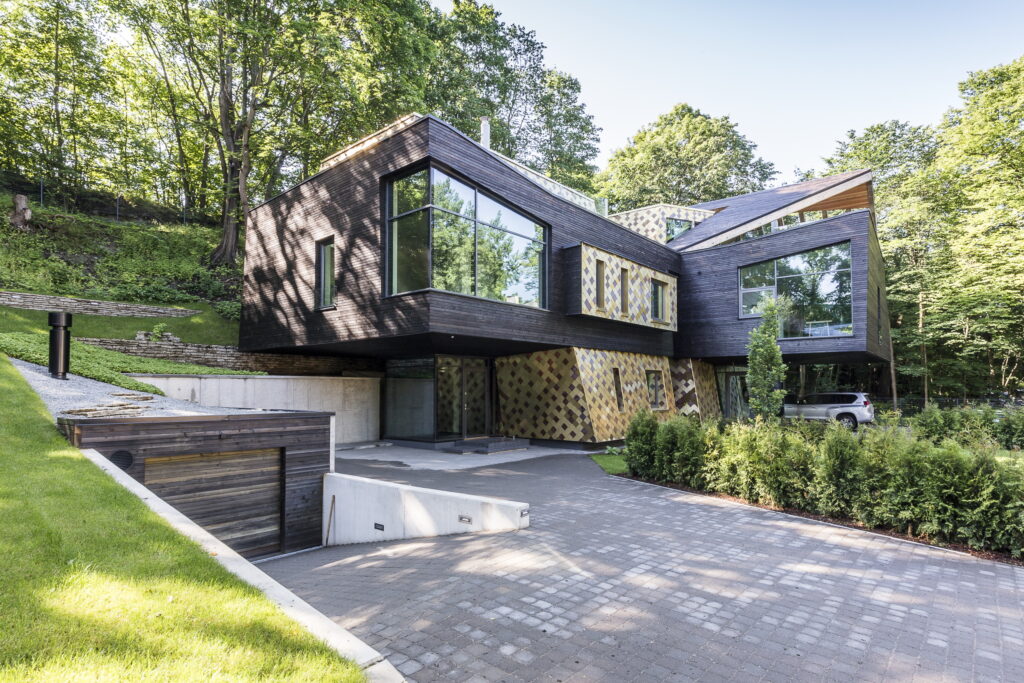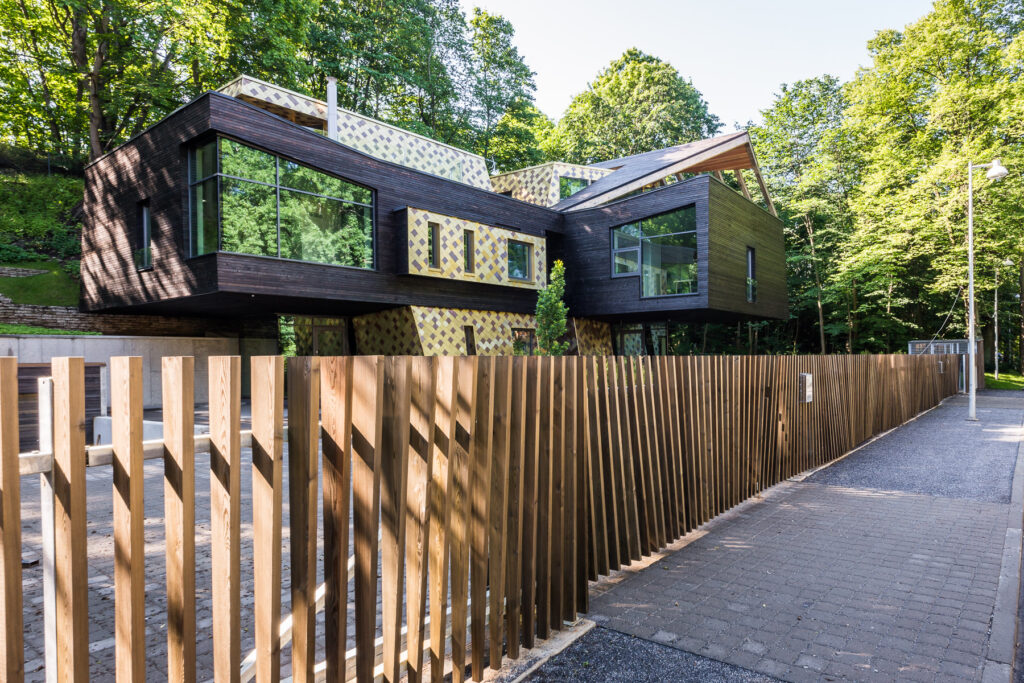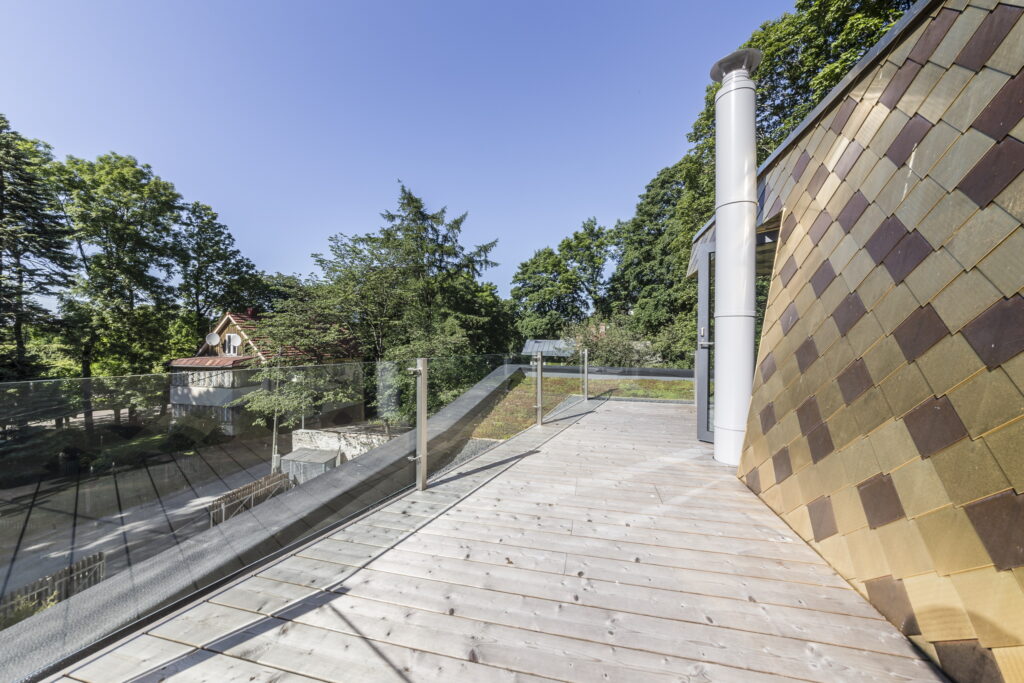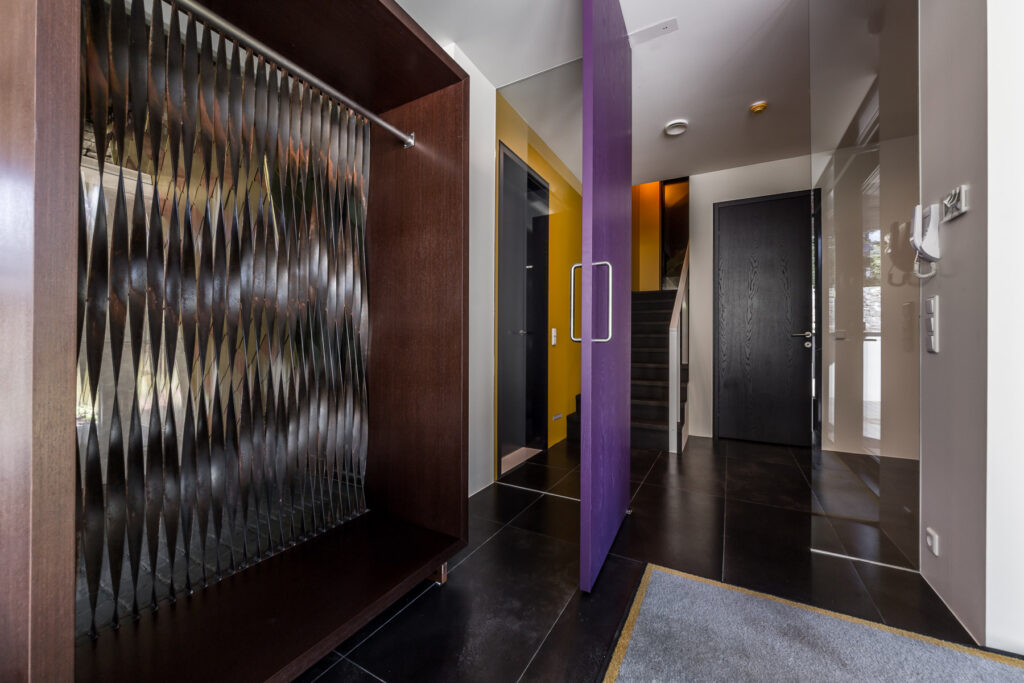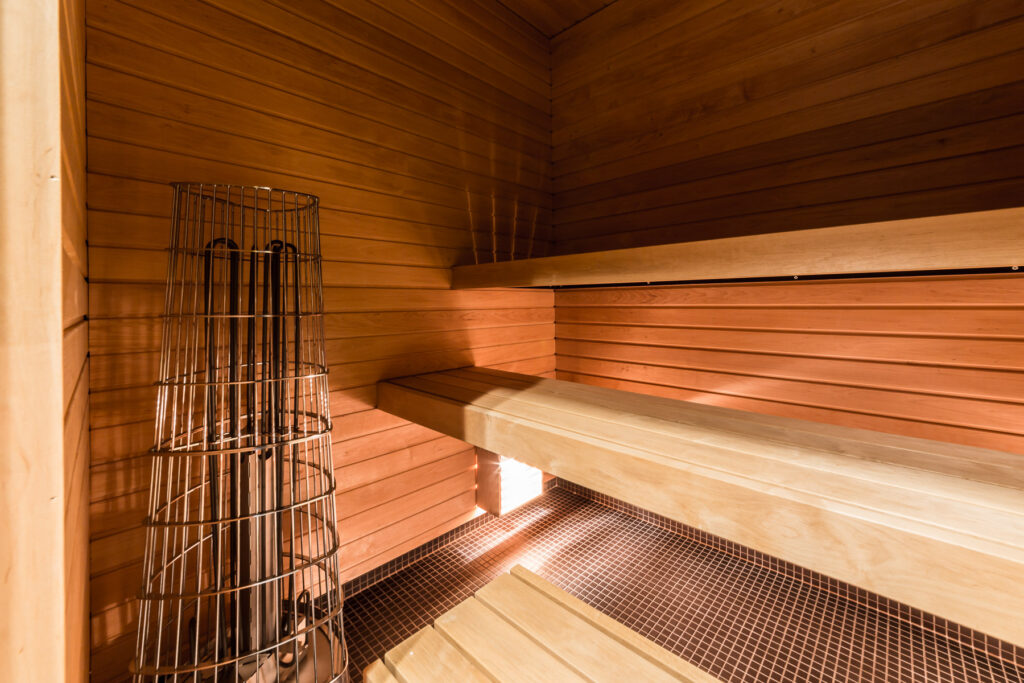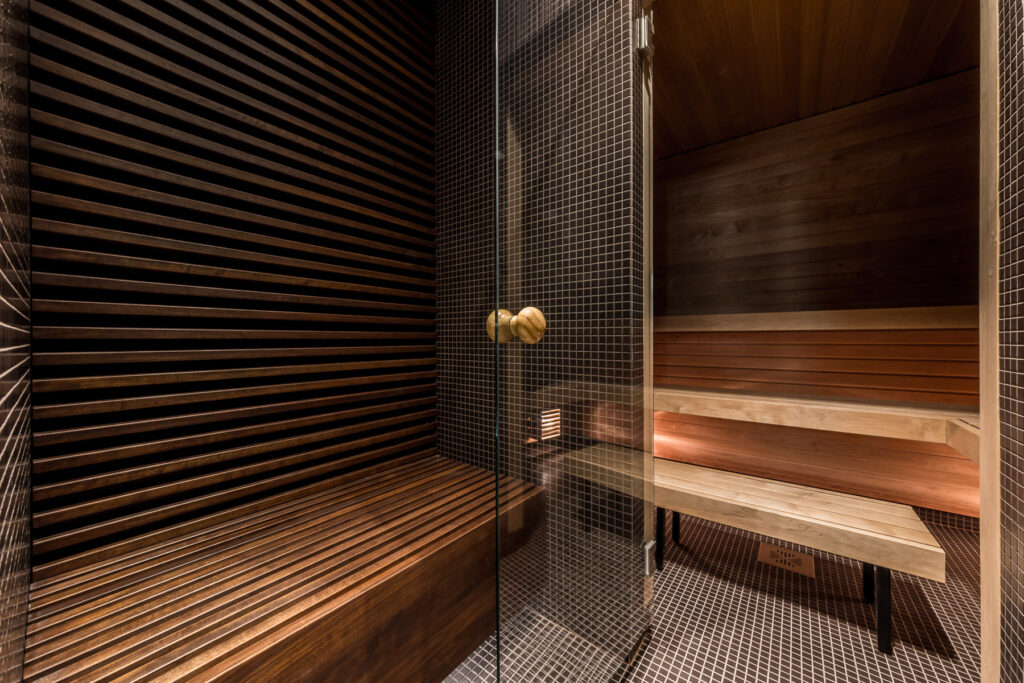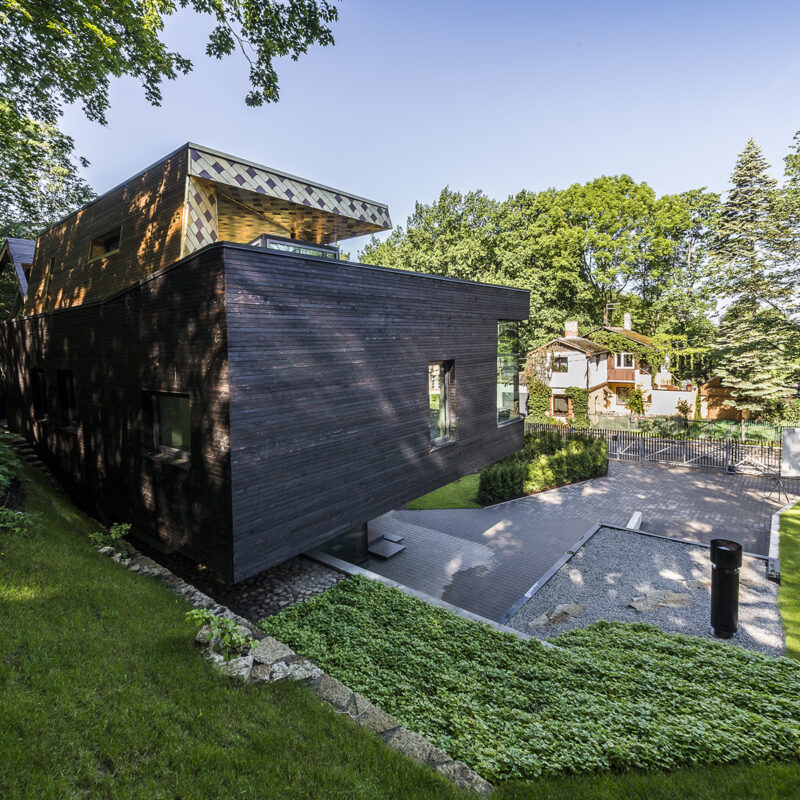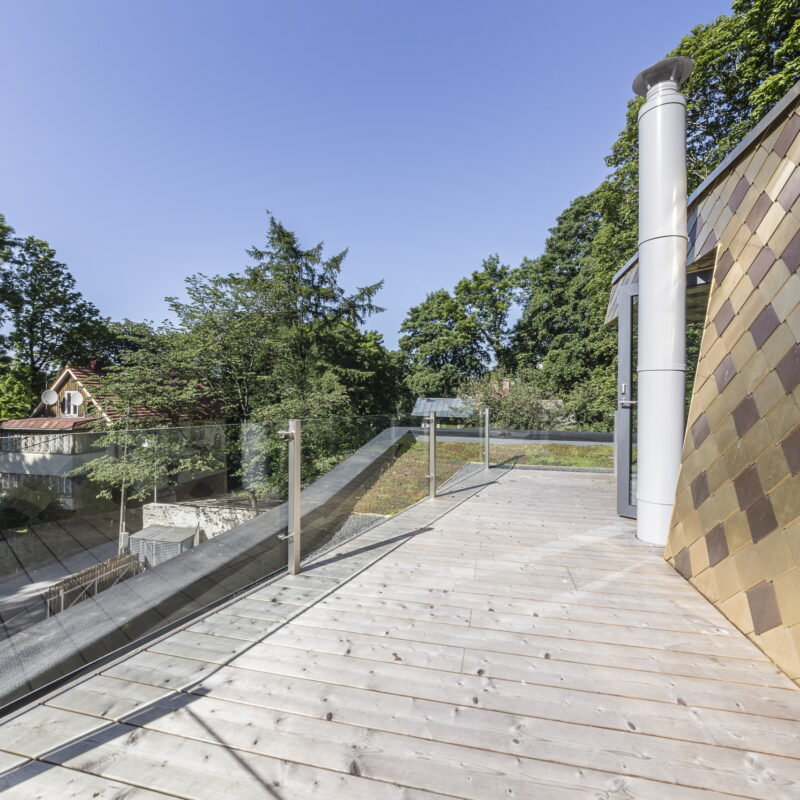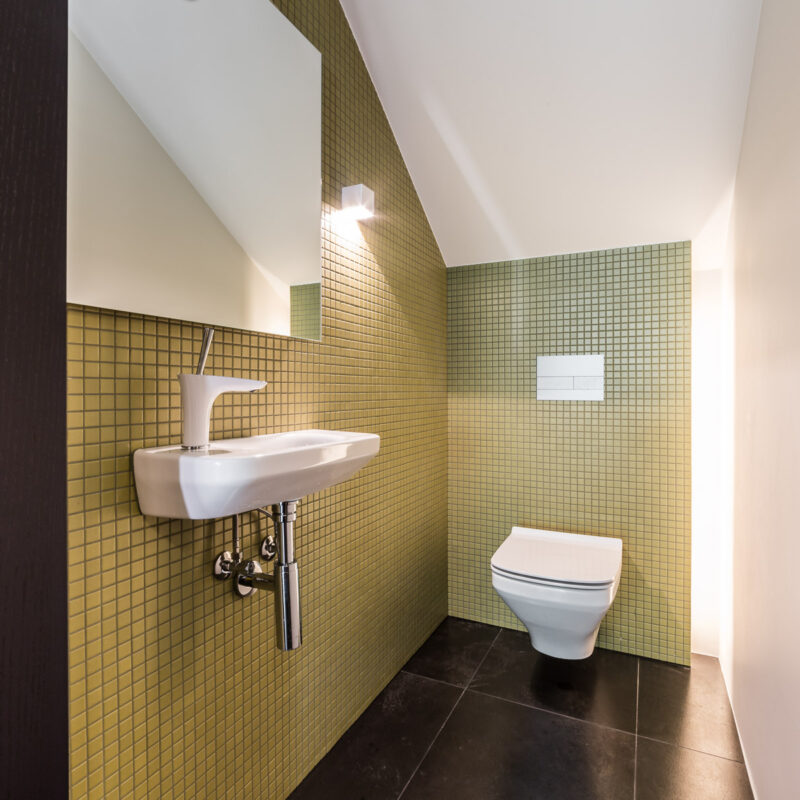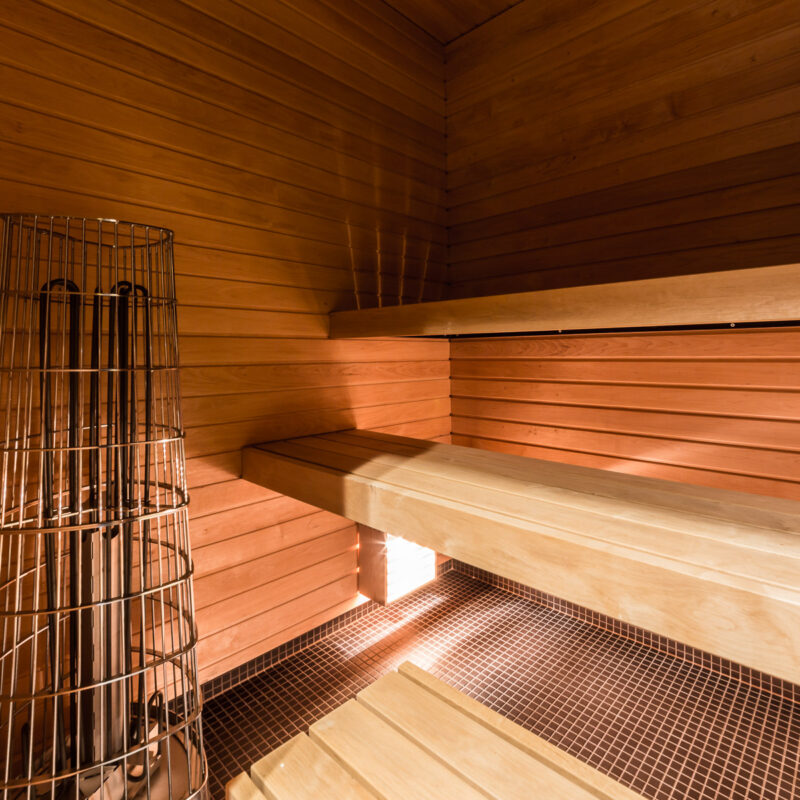Designed in the architectural design bureau Pluss (designer Indrek Allmann, architect Eeva Sova), the total floor space of the semi-detached house is around 400 m2. Floor 0 of the three-storey building houses the facilities with an office, the 1st floor is for living quarters and the 2nd floor includes the master bedroom with a terrace. The interior design solution of the building creates a whole, growing out of the initial architectural task and expectations of the client. The rooms are designed in a cosy style, with active splashes of colour adding character.
Flooring
The floor of storey 0 is covered with large-format monochrome dark tiles. The office has a floor of natural, dark-oiled oak strip parquet.
A glue laminated wooden staircase of the same hue leads up to the second floor. The same parquet flooring continues in the living quarters of floors 1 and 2. The wet rooms have small, slip-proof tiled floors.
Walls
The walls are mostly painted, with partial tile cover in the wet rooms. The walls of the sauna room are covered with panelling, while the changing room has decorative wooden tile wall covers.
Colours
The general tone of the walls is white. On floor 0, a colour accent is added by the revolving door of the hall, the sliding door of the wardrobe and the tiling of the WC. The floors are dark in the box.
Ceiling
The rooms are high and a hanging ceiling has mostly been used (except for the slanted ceiling of the living room), which is dictated by communications. There is a light-shaft over the dining table, ensuring additional natural light to the area.
Lighting
Cosy halogen lamps are used along with economic LED and stronger fluorescent lamps in the house fittings, wardrobes and as mirror lamps in the bathrooms. All light sources have a neutral, warmer-than-average light temperature. The lamps are light sources, and the hanging design lamps over the dining tables are used as design elements. The staircases are lighted by low wall-lamps. Floor and wall lamps with sockets add necessary spot lighting.
Apertures
The window frames are dark. The inner doors are high and dark. The revolving doors are coloured. The main source of natural light for the living room is the large panoramic window, assisted by windows in other walls and the light shaft in the ceiling.
Communications and Technical Conditions
The house has underfloor heating and forced ventilation with the solution hidden behind the hanging ceiling. The fireplace has a heating function.
Furnishing
The furnishing has been planned according to room zoning and functionality, and there is custom made furniture as well as ready-made items. The sanitary fittings are Duravit, and there is a steam sauna in the bedroom of the 2nd floor. The interior design textiles add splashes of colour. Window covers are in the same style, giving a unified outer impression. Vaikla Stuudio has prepared a complete interior design plan.
Terrace
The terrace opens to the daytime and evening sun with a view of the park, which can be reached via the hall of the 2nd floor.
